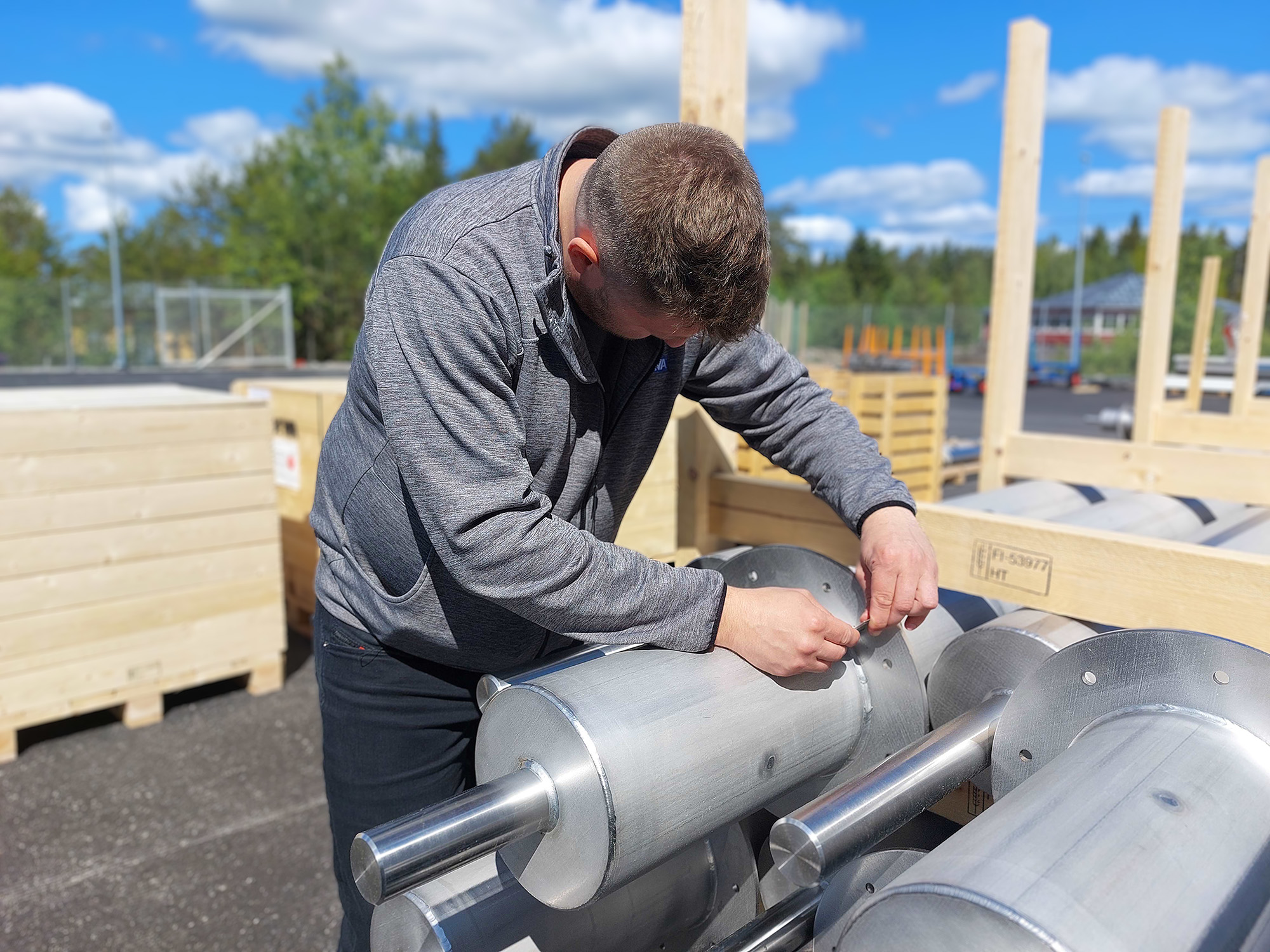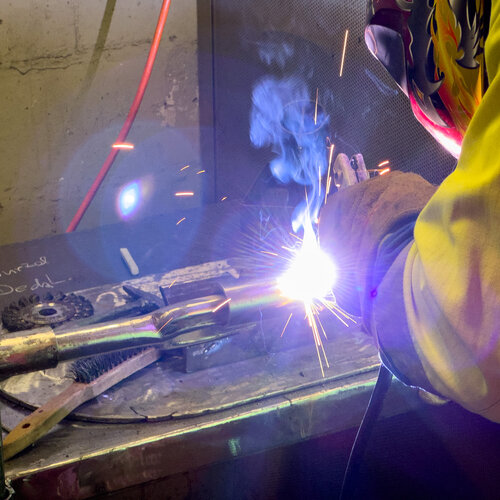The Ultimate Guide to Welding Inspection Racine for Industrial Specifications
The Ultimate Guide to Welding Inspection Racine for Industrial Specifications
Blog Article
Cutting-edge Methods to Fillet Weld Assessment and Testing: Enhancing Weld Top Quality and Conformity Criteria
In the world of welding, the top quality and stability of fillet welds play a critical function in making certain the structural soundness and dependability of different industrial elements. With the consistent drive for boosted effectiveness and compliance with stringent standards, the exploration of ingenious strategies to fillet weld assessment and testing has actually become essential.
Advanced Non-Destructive Screening Techniques
Making use of modern modern technologies, progressed non-destructive screening techniques play an essential role in guaranteeing the integrity and top quality of fillet welds. These approaches, such as phased variety ultrasonic screening (PAUT) and magnetic particle screening (MPT), offer thorough understandings right into the weld's interior structure without causing any damages to the product. PAUT, as an example, utilizes several ultrasonic components to examine the weld from different angles, offering a thorough visualization of possible issues like absence of blend or cracks.
By using these advanced non-destructive testing strategies, weld assessors can properly analyze the top quality of fillet welds, ensuring conformity with market criteria and regulations. The capability to spot flaws early on not only enhances weld quality but additionally protects against pricey rework or failings in structural integrity, highlighting the importance of these innovative screening approaches in welding examinations.
Robotics and Automation in Assessment
The combination of robotics and automation has revolutionized the evaluation process for fillet welds, enhancing performance and accuracy in top quality assessment. Robotics offer precise control and repeatability in examining welds, ensuring constant and dependable outcomes. Automated systems can be configured to adhere to certain assessment paths, guaranteeing detailed insurance coverage of welds and decreasing the threat of human error.
Robot examination systems furnished with sophisticated sensing units can discover and measure weld attributes with high precision, supplying detailed information for evaluation. These systems can determine flaws such as fractures, absence of blend, and porosity, enabling punctual restorative actions to be taken. Furthermore, robotics and automation enable for real-time data collection and analysis, providing instant feedback to operators and facilitating fast decision-making processes.
Moreover, the use of robotics and automation in fillet weld evaluation improves overall performance by minimizing evaluation times and raising examination throughput. By improving the evaluation process, manufacturers can guarantee weld quality and conformity standards are fulfilled successfully, eventually bring about cost savings and boosted item high quality.
Using Expert System for Analysis
Expert system plays an essential duty in boosting the performance and precision of evaluation in fillet weld inspection processes. By harnessing the power of AI, assessors can simplify the analysis of weld quality and compliance standards, causing more exact and reliable outcomes. AI algorithms can swiftly process large amounts of information from weld examinations, detecting defects or disparities that may be challenging to understand the nude eye. This sophisticated technology allows real-time surveillance of weld quality, allowing for immediate corrective activities to be taken if any concerns are identified. webpage
In addition, AI systems can discover from past assessment information, continuously enhancing their ability to determine potential problems and deviations in fillet welds. This adaptive learning capability improves the general high quality control process, decreasing the likelihood of human mistake and making certain that welds fulfill the required criteria. By incorporating expert system right into fillet weld analysis, markets can achieve greater degrees of performance, uniformity, and compliance in their examination techniques.
Portable Devices for On-Site Examination
 Enhancing field assessment performance, the fostering of mobile tools revolutionizes on-site evaluation procedures for fillet welds. These devices offer flexibility and benefit, enabling inspectors to carry out detailed evaluations in different locations, consisting of remote or challenging atmospheres. Portable devices such as ultrasonic testing gadgets, magnetic particle assessment devices, and digital radiography systems offer real-time information and high-resolution imaging abilities, enabling quick decision-making and immediate feedback on weld high quality.
Enhancing field assessment performance, the fostering of mobile tools revolutionizes on-site evaluation procedures for fillet welds. These devices offer flexibility and benefit, enabling inspectors to carry out detailed evaluations in different locations, consisting of remote or challenging atmospheres. Portable devices such as ultrasonic testing gadgets, magnetic particle assessment devices, and digital radiography systems offer real-time information and high-resolution imaging abilities, enabling quick decision-making and immediate feedback on weld high quality.One substantial benefit of portable tools is their capacity to simplify evaluation treatments, lowering downtime and improving overall efficiency. Assessors can conveniently transfer these tools to various task sites, getting rid of the requirement for moving hefty machinery or elements to off-site facilities. Additionally, the portability of these tools promotes cost-effectiveness by minimizing transportation expenses and increasing assessment timelines.
Furthermore, making use of portable devices for on-site inspection advertises aggressive high quality control actions, as inspectors can promptly determine and attend to any kind of potential welding flaws or discrepancies. By including these cutting-edge technologies into on-site assessment methods, welding experts can make sure conformity with industry requirements and improve weld top quality, eventually resulting in boosted architectural integrity and safety in numerous welding applications.
Integration of Data Monitoring Solution
Having actually optimized on-site evaluation processes via the use of portable tools, the next phase involves the seamless combination of data administration systems to better boost efficiency and information analysis capacities in fillet weld evaluation and screening. Welding Inspection Racine. By incorporating information administration systems right into the inspection process, organizations can enhance information collection, storage space, and analysis. This assimilation permits for real-time surveillance of weld quality, prompt recognition of defects, and prompt decision-making to fix any type of concerns that may develop during the assessment procedure
Information management systems play an important role in systematizing evaluation information, assisting Resources in easy gain access to for authorized employees, and making sure data integrity and safety. Via the combination of these systems, assessors can generate comprehensive reports, track historic data for pattern analysis, and enhance general process performance. The combination of data monitoring systems enables seamless communication between different stakeholders involved in the inspection procedure, fostering collaboration and boosting total top quality control steps. Eventually, the integration of data monitoring systems serves to elevate the requirements of fillet weld evaluation and testing, making certain conformity with market policies and enhancing weld high quality.
Final Thought
Finally, ingenious approaches to fillet weld inspection and screening have substantially boosted weld high quality and conformity requirements. Advanced non-destructive testing approaches, robotics, automation, synthetic knowledge, mobile tools, and data administration systems article have actually revolutionized the means weld evaluations are conducted. By using these innovations, industries can make certain that welds satisfy the needed high quality requirements and laws, inevitably improving overall effectiveness and safety in welding processes.

By employing these sophisticated non-destructive screening strategies, weld examiners can accurately evaluate the high quality of fillet welds, ensuring compliance with sector requirements and policies. Mobile tools such as ultrasonic testing tools, magnetic fragment inspection tools, and electronic radiography systems offer real-time information and high-resolution imaging capacities, making it possible for fast decision-making and instant comments on weld quality.
Having maximized on-site examination procedures with the application of portable devices, the next phase involves the smooth combination of information monitoring systems to better enhance efficiency and data analysis capacities in fillet weld assessment and screening (Welding Inspection Racine). Eventually, the integration of information administration systems offers to boost the criteria of fillet weld examination and screening, ensuring conformity with sector policies and improving weld high quality
 In verdict, ingenious techniques to fillet weld examination and testing have dramatically boosted weld quality and compliance criteria.
In verdict, ingenious techniques to fillet weld examination and testing have dramatically boosted weld quality and compliance criteria.Report this page